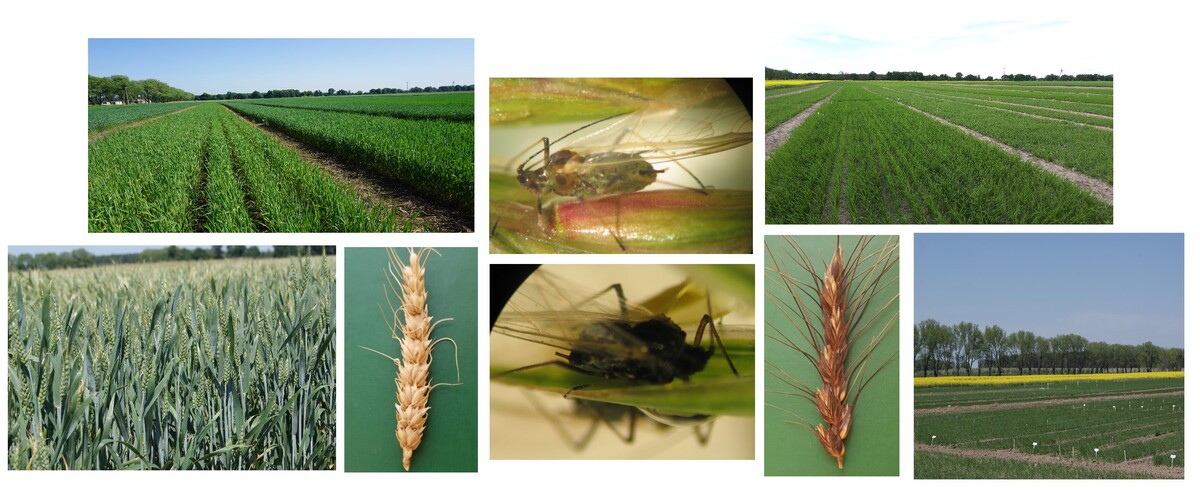ORIGINAL ARTICLE
Analysis of the number of hemimetabolous insects at variable wheat sowing density - the role of nitrogen in the plant and soil.
1
Department of Biochemistry, Faculty of Medicine, Bydgoszcz University of Science and Technology in Bydgoszcz, Bernardyńska 6, 85-029, Bydgoszcz, Poland
2
Department of Microbiology and Plant Ecology, Bydgoszcz University of Science and Technology in Byd-goszcz, Kaliskiego 7, 85-796, Bydgoszcz, Poland
3
Department of Agronomy and Food Processing,, Bydgoszcz University of Science and Technology in Bydgoszcz, Kaliskiego 7, 85-796, Bydgoszcz, Poland
4
Department of Biogeochemistry, Soil Science, Irrigation and Drainage,, Bydgoszcz University of Science and Technology in Bydgoszcz, Bernardyńska 6, 85-029, Bydgoszcz, Poland
A - Research concept and design; B - Collection and/or assembly of data; C - Data analysis and interpretation; D - Writing the article; E - Critical revision of the article; F - Final approval of article
Submission date: 2025-05-14
Acceptance date: 2025-10-14
Online publication date: 2025-10-30
Corresponding author
Joanna Lemanowicz
Department of Biochemistry, Faculty of Medicine, Bydgoszcz University of Science and Technology in Bydgoszcz, Bernardyńska 6, 85-029, Bydgoszcz, Poland
Department of Biochemistry, Faculty of Medicine, Bydgoszcz University of Science and Technology in Bydgoszcz, Bernardyńska 6, 85-029, Bydgoszcz, Poland
HIGHLIGHTS
- Wheat variety and sowing density influenced total nitrogen in soil
- Insects decidedly prefer cereal plants grown under organic farming
- A positive relationship was found between nitrogen in the soil and in wheat in OF
- Total nitrogen had a negative impact on insect feeding
KEYWORDS
TOPICS
ABSTRACT
This work investigated the influence of nitrogen compounds on soil–plant–insect interactions. The study aimed to assess the effect that cultivation of two spring wheat cultivars (Triticum sphaerococcum Percival and Triticum persicum Vavilov) at various plant densities (400, 500 and 600 grains m˗2) under organic and conventional farming had on the abundance of mimetabolous insects in the context of selected chemical and biochemical soil properties. The soil was assayed for its content of organic carbon (SOC), total nitrogen (STN), nitrate (SNO3‾) and activity of proteases (PRO) – an enzyme involved in N transformation. The aboveground part of spring wheat was assayed for the content of total nitrogen (TNC) and nitrate nitrogen (TNO3‾). Spring wheat variety and plant density both determined the SOC and STN content. The tested soil was characterized by low SOC content. PRO activity was positively correlated with SOC and STN contents, which indicated the role of this enzyme in organic matter cycling. Thysanoptera, Aphididae and Miridae were found to prefer spring wheat grown under organic farming. However, the numbers of these pests did not pose a threat to the growth and development of the host plant. Hemimetabolous insects were far less abundant on T. persicum than on T. sphaerococcum.
CONFLICT OF INTEREST
The authors have declared that no conflict of interests exist.
Share
RELATED ARTICLE
We process personal data collected when visiting the website. The function of obtaining information about users and their behavior is carried out by voluntarily entered information in forms and saving cookies in end devices. Data, including cookies, are used to provide services, improve the user experience and to analyze the traffic in accordance with the Privacy policy. Data are also collected and processed by Google Analytics tool (more).
You can change cookies settings in your browser. Restricted use of cookies in the browser configuration may affect some functionalities of the website.
You can change cookies settings in your browser. Restricted use of cookies in the browser configuration may affect some functionalities of the website.




